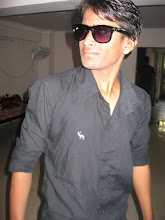Archive for May 2014
DATA STRUCTURE
Data structure is a particular way of storing and organizing information in a computer so that it can be retrieved and used most productively.
Data structures are important for the following reasons:
1. Data structures are used in almost every program or software system.
2. Specific data structures are essential ingredients of many
Many algorithms apply directly to a specific data structures. When working with certain data structures you need to know how to insert new data, search for a specified item, and deleting a specific item.
Commonly used algorithms include are useful for:
- Searching for a particular data item (or record).
- Sorting the data. There are many ways to sort data. Simple sorting, Advanced sorting
- Iterating through all the items in a data structure. (Visiting each item in turn so as to display it or perform some other action on these items)
BASIC DATA STRUCTURE PROGRAMS :
1 . Stack Implementatio Using Array
2. Stack Implementation (All operations)
3. Stack Using Linked List
4. Queue Implementation Using Array
5. Queue Implementation (All Operation)
6. Queue Using Linked List
7. Singly Linear Link List (All Operation)
8. Doubly Linear Link List (All Operation)
9. Addition of Two Polynomial Equaction
10. Infix to Prefix Conversion
11. Infix to Postfix Conversion
12. Implement Evaluation of Postfix
13. Binary Search Tree All Operation)
14. Searching Element of Binary Search Tree
15. Sorting Binary Search Tree
16. Sorting Using Bubble Sort
C PROGRAMMING LANGAUGE
The C programming language was devised in the early 1970's by Dennis M. Ritchie an employee from Bell Labs (AT&T). In the 1960s Ritchie worked, with several other employees of Bell Labs (AT&T), on a project called Multics. In 1969 AT&T (Bell Labs) withdrew from the project, because the project could not produce an economically useful system. So the employees of Bell Labs (AT&T) had to search for another project to work on (mainly Dennis M. Ritchie and Ken Thompson).
1. Print "Hello World"
2. Addition of Two Number
3. Swapping of Two Number within Three Variables
4. Swapping of Two Number without Three Variables
5. Greatest of Three Number
6. Minimum of Three Number
7. Average of Three Number
8. Check Number is Prime and Not-Prime
9. Check Year is Leap and Not-Leap year
10. Check character is Vowel and Consonant
11. Check Number is Positive and Negative
12. Check Number is Arm-strong and Not-Arm-Stong
13. Square of Any Number
14. Area of Circle
15. Count Number by Shifting
16. Left Shifting
17. Print 1 to 10 by(While Loop)
18. Using Switch case
19. Array Select of Ascending order
20. Addition of Two Matrix
21. Multipilication of Two Number
22. Factorial Number
23. Addition of Input Digits
24. Insert a Current Date
25. Check Number is Even and Odd
26. Check Alphabate and Digit
27. All ASCII Code of C Lang.
28. Check Simple Interest
29. Print a Table of User Choice
30. Stop Watch
31. Check Matrix is Uni and Not-Unit Matrix
32. Largest Number of Enter Elements
33. Any String to Change of lower case to Upper Case
Posted by
Pratik Badala



